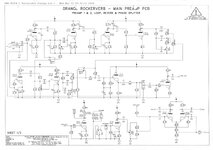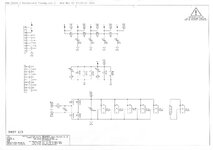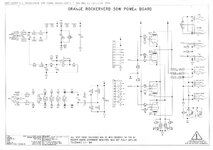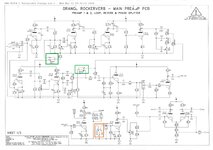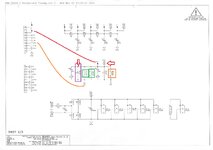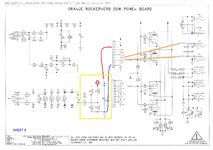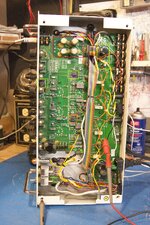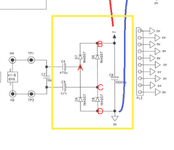BesaMoogie
Well-known member
Hi, I need some help here.
My RV50 MK1 does not switch channels, it stays in the dirty channel all the time. Not only with the footswitch does not work, but also the switch on the front panel. So I think the problem is not related to the FS or the jack.
The footswitching for the reverb does also not work.
In the orange forum I red, that if the front panel switch does not work either, the problem is more likely related to relays or a chip etc.
What is the best way to troubleshoot this? I attached some schematics of the RV50.
On a side note, the amp was not played for like 2-3 years. When I turned it on, I used a variac and brought up the voltage slowly up to prevent too much stress on the filter caps.
Thanks!
My RV50 MK1 does not switch channels, it stays in the dirty channel all the time. Not only with the footswitch does not work, but also the switch on the front panel. So I think the problem is not related to the FS or the jack.
The footswitching for the reverb does also not work.
In the orange forum I red, that if the front panel switch does not work either, the problem is more likely related to relays or a chip etc.
What is the best way to troubleshoot this? I attached some schematics of the RV50.
On a side note, the amp was not played for like 2-3 years. When I turned it on, I used a variac and brought up the voltage slowly up to prevent too much stress on the filter caps.
Thanks!

